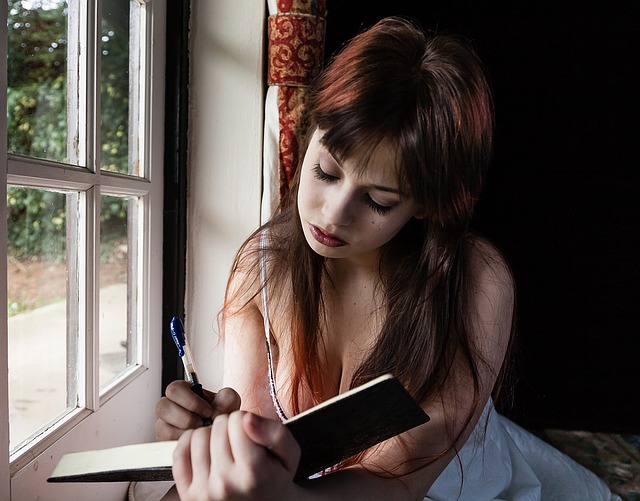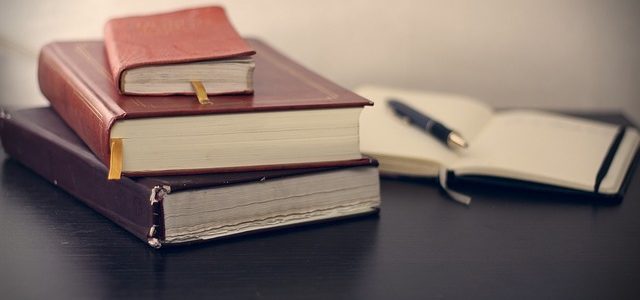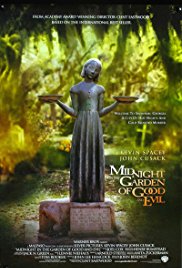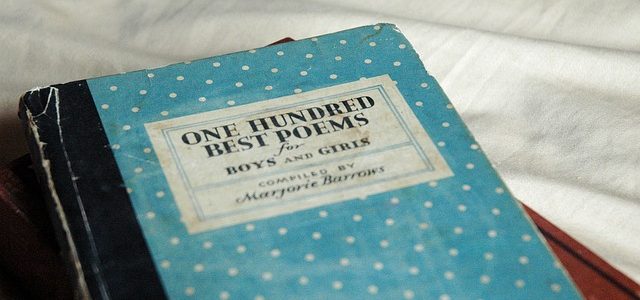Gwynn Scheltema
Like a lot of teenage girls, I kept a diary for several years. Entries are a hodgepodge of the trivial: (we didn’t have the geography test today), funny: (my blue dress seems to have shrunk and Daddy is not amused!), and, on occasion, surprising: (I found myself sleepwalking last night).
I wrote strictly about my life, what happened and how I felt about it. The diaries were hard-cover, date-at-the-top-of-the-page books, and fifty years later, I still have them. I’m glad I have them. But I know I likely wouldn’t if they had been soft-cover spiral-bound notebooks.
And now?
Yet these days, I do journal in spiral-bound notebooks—and tiny pocket notepads, on the computer and in large books with unlined paper. So why the difference?
What prompted me to think about my different journals, was a comment on my post To Edit or Not to Edit, where she mentioned the Steinbeck style of journaling (a guest post by by Kendra Levin on Brian Kelms blog) where Steinbeck had a “companion journal” chronicling his progress on his novel. I don’t have a Steinbeck companion journal (yet), but I do have a variety of journals that serve different purposes and their physical form does seem to influence their use.
 Sadly, I have several beautiful journals—handmade paper, illustrated, filled with wise sayings, beautifully bound—and I will likely never write in them. I’m afraid I’ll “spoil” them, like everything I write in them needs to be perfect. Silly, maybe, but that’s me. Many writers are inspired by beautiful paper or pens, or illustrations and bindings. Just not me.
Sadly, I have several beautiful journals—handmade paper, illustrated, filled with wise sayings, beautifully bound—and I will likely never write in them. I’m afraid I’ll “spoil” them, like everything I write in them needs to be perfect. Silly, maybe, but that’s me. Many writers are inspired by beautiful paper or pens, or illustrations and bindings. Just not me.
So here’s what I use and why:
Journal for Morning Pages
After the teenage years, I didn’t journal for decades. What got me back into it was Julia Cameron’s creative self-discovery book The Artists Way, where I discovered morning pages—three pages of uncensored writing done first thing in the morning. No rules, don’t overthink, just write three pages of something. When I first started, a lot of it was ranting or wishing and even to-do lists. But now, it’s a mix of personal and creative. Most of my poetry starts in mornings pages, and I use it to “talk out” fiction problems too, and start fiction scenes.
 I tried various sizes, lined and unlined, and finally settled on a 6 x 9 lined. It fits easily on my bedside table and filling 3 pages doesn’t intimidate me. The reality is, I often fill far more. They fill up quickly, so I invested in a leather refillable version that closes with a tab and has a pen holder. Refill notebooks are cheap and easily found at the dollar store, because it is a standard size. I’m not forced to buy refills from the original manufacturer. As I finish each one, I label it with the dates it covers and store them on a shelf in my writing room.
I tried various sizes, lined and unlined, and finally settled on a 6 x 9 lined. It fits easily on my bedside table and filling 3 pages doesn’t intimidate me. The reality is, I often fill far more. They fill up quickly, so I invested in a leather refillable version that closes with a tab and has a pen holder. Refill notebooks are cheap and easily found at the dollar store, because it is a standard size. I’m not forced to buy refills from the original manufacturer. As I finish each one, I label it with the dates it covers and store them on a shelf in my writing room.
B.I.C. File
Morning pages are done by hand on paper before I get out of bed. If I wrote everything by hand, however, I would waste a lot of time typing it up. So I have a computer journal too.
I house it in Scrivener, and the project name is BIC (bum in chair). I write here with the same uncensored writing attitude as morning pages: sometimes timed freefall sessions, sometimes writing prompts, all in an attempt to stay ahead of the internal critic. It works. Many blogs and fiction scenes have been birthed here. When I create something I think is useful, it’s easy to copy and paste it to the relevant writing file and keep going.
Journal for Anytime – Anywhere
This notebook has to fit in my purse, so it’s much smaller, about 3 x4, dollar store quality. In it, I record odd thoughts or observations that come to me when I’m out and about. It has no organizing method, and I make sure it doesn’t have too many pages, because if it stays rattling around too long in my purse, it tends to fall apart. This forces me to take the contents and do something with them: type them up in appropriate computer files (blog ideas; scenes for the novel; poetry ideas etc.), add them to projects, or discard them.
Visual Journal
 A good friend of mine keeps her journal in a large blank-paged artist’s sketch book. She writes in it, draws in it, sticks photos and leaves and feathers in it too. It’s like a giant scrapbook, and she says she likes the freedom of not having lines. I’m not so good with things that don’t have boundaries—safety edges—but I do keep a version of this. I have one for my novel, with newspaper clippings, photos, magazine cut-outs, maps of towns or plans of houses. Visual stuff. Electronically, I use Pinterest (a board for each novel) and Scrivener has great research capabilities for keeping visuals and web links.
A good friend of mine keeps her journal in a large blank-paged artist’s sketch book. She writes in it, draws in it, sticks photos and leaves and feathers in it too. It’s like a giant scrapbook, and she says she likes the freedom of not having lines. I’m not so good with things that don’t have boundaries—safety edges—but I do keep a version of this. I have one for my novel, with newspaper clippings, photos, magazine cut-outs, maps of towns or plans of houses. Visual stuff. Electronically, I use Pinterest (a board for each novel) and Scrivener has great research capabilities for keeping visuals and web links.
Teeny-tiny sentence-a-day journal
 Quite by chance, I was given a pocket journal, about the size of a credit card. I wondered what on earth I could possible use it for. I decided I would force myself to observe through all the senses and each day write just a single line to describe something in a different way. The sentence-a-day part didn’t work out, but those single lines have inspired poetry and been a great exercise for my creative mind.
Quite by chance, I was given a pocket journal, about the size of a credit card. I wondered what on earth I could possible use it for. I decided I would force myself to observe through all the senses and each day write just a single line to describe something in a different way. The sentence-a-day part didn’t work out, but those single lines have inspired poetry and been a great exercise for my creative mind.
Whether you want to keep the personal separate from your fiction, or hate margins, or need space to draw, it’s all your choice. Ultimately, there is no right or wrong form for a journal. What’s important is that it suits your way of creating.
What journals do you keep and why?



 That means that October, affectionately known as “Preptober” is a month for getting all your ducks in a row, so you’re ready to actually write on November 1. Below are 10 ways to get ready to write, for NaNoWriMo or indeed for any new novel project.
That means that October, affectionately known as “Preptober” is a month for getting all your ducks in a row, so you’re ready to actually write on November 1. Below are 10 ways to get ready to write, for NaNoWriMo or indeed for any new novel project. Start with
Start with  Brainstorm story ideas. Outline potential plots. Ask yourself the simple but effective “What if?”, or use the base of all ancient myths and tales: the three act structure. If you know how you want your story to end, consider working backwards too. You might want to check out these tried and true variants of the three act structure too.
Brainstorm story ideas. Outline potential plots. Ask yourself the simple but effective “What if?”, or use the base of all ancient myths and tales: the three act structure. If you know how you want your story to end, consider working backwards too. You might want to check out these tried and true variants of the three act structure too. Define your story world: place and time. This could be as simple as “Russia pre 1917 revolution” or “Haliburton 1956”, or as complex as a new fantasy world or imagined planet. Or it might be a mix, say a fictitious town called Halbury based on Haliburton. Setting is important to ground your story and your readers. The more complex your setting, the more up-front “
Define your story world: place and time. This could be as simple as “Russia pre 1917 revolution” or “Haliburton 1956”, or as complex as a new fantasy world or imagined planet. Or it might be a mix, say a fictitious town called Halbury based on Haliburton. Setting is important to ground your story and your readers. The more complex your setting, the more up-front “







 Medical researcher Valdas Noreika is his
Medical researcher Valdas Noreika is his  The beauty of focussing is that we need only think about (substitute “worry about”; “imagine”; “create”) one thing—one small thing—at a time.
The beauty of focussing is that we need only think about (substitute “worry about”; “imagine”; “create”) one thing—one small thing—at a time. She says: “This sentence doesn’t need to have anything to do with the work that you are wrestling. Maybe it’s about the chip in the coffee mug on your desk. Maybe it’s about a phone call with your mother last night. Or the patter of rain against the window. Maybe it’s about the doubt that your story or novel has stirred in you, concretized in an image that will form if you stay long enough between capitalized letter and period for the clichés to flow away, long enough for the appearance of magical corpuscles.”
She says: “This sentence doesn’t need to have anything to do with the work that you are wrestling. Maybe it’s about the chip in the coffee mug on your desk. Maybe it’s about a phone call with your mother last night. Or the patter of rain against the window. Maybe it’s about the doubt that your story or novel has stirred in you, concretized in an image that will form if you stay long enough between capitalized letter and period for the clichés to flow away, long enough for the appearance of magical corpuscles.” Set a timer for one minute (when you get good at this, increase to longer times) and write without ending your sentence. Use any and all conjunctions and other methods of joining phrases, such as: and; and then; but; until; because; however; etc. Just keep writing and writing and writing. Afterwards, it is easy to erase the bits you don’t want and fix the sentence structure.
Set a timer for one minute (when you get good at this, increase to longer times) and write without ending your sentence. Use any and all conjunctions and other methods of joining phrases, such as: and; and then; but; until; because; however; etc. Just keep writing and writing and writing. Afterwards, it is easy to erase the bits you don’t want and fix the sentence structure.
 Want to find an opposite, a rhyming word, a word for a phrase? Head to
Want to find an opposite, a rhyming word, a word for a phrase? Head to  Is your research article “Too Long Didn’t Read” or TLDR? Add
Is your research article “Too Long Didn’t Read” or TLDR? Add  Instead of hitting the backspace key multiple times to erase a word., hit crtl + backspace to erase the whole word at once. It works the same for deleting a whole word with crtl + delete.
Instead of hitting the backspace key multiple times to erase a word., hit crtl + backspace to erase the whole word at once. It works the same for deleting a whole word with crtl + delete.












 Looking for another way to describe hair colour? Words to use instead of “amazing”. Pinterest has pins for that. Also pins for commonly misused words, when to use what kind of hyphen, and avoiding clichés—including cliché characters.
Looking for another way to describe hair colour? Words to use instead of “amazing”. Pinterest has pins for that. Also pins for commonly misused words, when to use what kind of hyphen, and avoiding clichés—including cliché characters.
 If you like to be social, you can follow other pinners, join group boards or comment on pins. There are even hilarious “Pinterest Fail” pins.
If you like to be social, you can follow other pinners, join group boards or comment on pins. There are even hilarious “Pinterest Fail” pins.
 I remember a piece of old wood with termites running around all over it the termite men found under our front porch.
I remember a piece of old wood with termites running around all over it the termite men found under our front porch.
 Here is an excerpt from “A”
Here is an excerpt from “A” Excerpt from PETALS
Excerpt from PETALS by Gwynn Scheltema
by Gwynn Scheltema I walk down the garden paths,
I walk down the garden paths, I walk down the garden-paths,
I walk down the garden-paths, Wallace Stevens wrote a poem called
Wallace Stevens wrote a poem called  Poet
Poet 
 What is your story about?
What is your story about? Character’s name
Character’s name When the story happens
When the story happens Genre
Genre A representative line from the text
A representative line from the text Go against expectation
Go against expectation A Play on words: double meanings, puns
A Play on words: double meanings, puns Single words
Single words  The promise of a story
The promise of a story

 If you don’t have poetry on your bookshelves, there is plenty out there to sample. You might want to start with the
If you don’t have poetry on your bookshelves, there is plenty out there to sample. You might want to start with the  Another great website for classic poetry and prose is
Another great website for classic poetry and prose is  Just like the reading version of a poem a day, Writer’s Digest runs a
Just like the reading version of a poem a day, Writer’s Digest runs a  The public plus local schools were invited to submit to a poetry contest. The poems had to be on topics directly related to Earth Day, like the environment, our planet, ecology, nature, organic gardening and/or farming, evolving human awareness of other living organisms, climate change, greenhouse effect, and pollution. The poems were to be 24 lines or less and the winners read their poems at ceremonies at
The public plus local schools were invited to submit to a poetry contest. The poems had to be on topics directly related to Earth Day, like the environment, our planet, ecology, nature, organic gardening and/or farming, evolving human awareness of other living organisms, climate change, greenhouse effect, and pollution. The poems were to be 24 lines or less and the winners read their poems at ceremonies at  One of the spin-offs that came out of NPM is something called Poem-in-Your-Pocket Day. Also celebrated in April—this year on April 26—Poem-in-Your-Pocket Day encourages people to carry a poem with them, and share it with others throughout the day. This day is celebrated not just in North America, but in Europe and Australia too. Some of the activities that everyone (not just poets) are encouraged to get involved with are:
One of the spin-offs that came out of NPM is something called Poem-in-Your-Pocket Day. Also celebrated in April—this year on April 26—Poem-in-Your-Pocket Day encourages people to carry a poem with them, and share it with others throughout the day. This day is celebrated not just in North America, but in Europe and Australia too. Some of the activities that everyone (not just poets) are encouraged to get involved with are: Start a “poems for pockets” giveaway in your school or workplace
Start a “poems for pockets” giveaway in your school or workplace Poets also appreciate attendance at their poetry readings. A quick Google search of “poetry reading” and “Northumberland” gave me 3 readings in the next three weeks I could attend including this one at the
Poets also appreciate attendance at their poetry readings. A quick Google search of “poetry reading” and “Northumberland” gave me 3 readings in the next three weeks I could attend including this one at the 